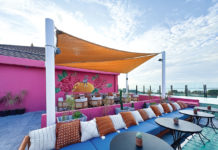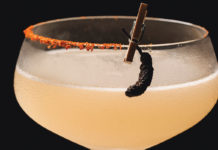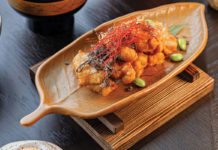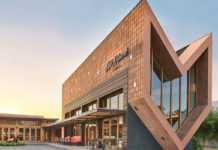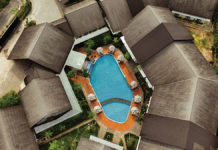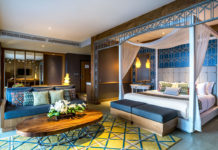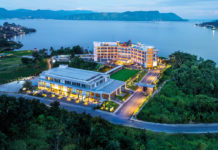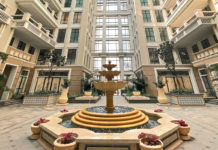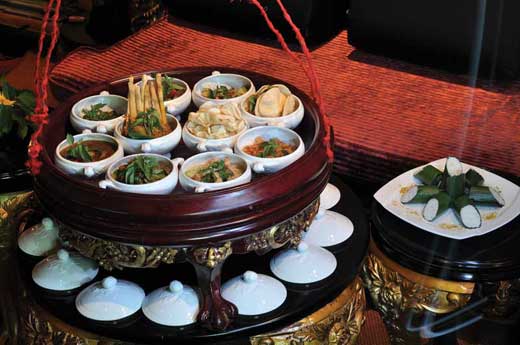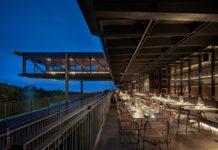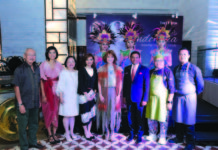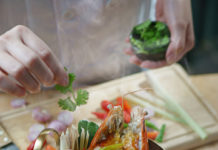Dinner With History
Lavishly appointed with art and artifacts, this 100-year-old colonial building has been transformed into one of Jakarta’s most exciting eating experiences
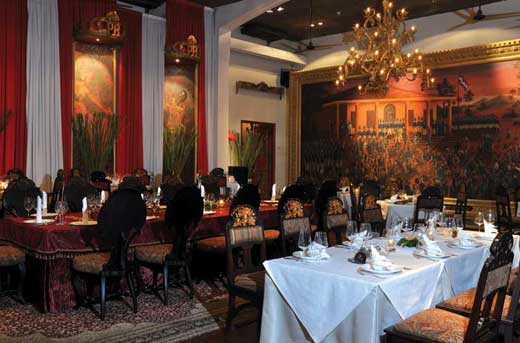
Tourists in Jakarta are often disappointed by the city’s lack of historical sights to visit. One exception to this is Bataviasche Kunstkring, which opened in 1914 and is one of the few well-preserved historical buildings in Central Jakarta. The grand monument to Dutch-Indonesian design originally housed the Fine Arts Circle of the Dutch East Indies, a group dedicated to the promotion of arts from the region. It served as an exhibition space that, at various times, displayed pieces from masters like Picasso and Van Gogh. For many years, it also functioned as a government immigration building.
Last year, Bataviasche Kunstkring reopened with a new name and new purpose, one that brings it back to its original mission as an art and exhibition space, while also serving as a gorgeous restaurant with an emphasis on recreating historical dining experiences.
A Palatial Setting
The venue’s current name, Kunstkring Paleis, is a most appropriate moniker for the completely renovated building, now filled with art, antiques and custom furnishings that give it a sweepingly palatial feel. The new look comes courtesy of Tugu Hotels & Restaurants Group, which also owns the legendary Lara Djonggrang, Dapur Babah, Samara and Shanghai Blue restaurants in Jakarta. Each of the group’s venues, as well as its hotels, feature stunning settings designed by the group’s owner, Anhar Setjadibrata, and decorated with his incomparable collection of Indonesian art and antiques, a collection he has built up over four decades. Anhar is intimately hands on with the design of each of his properties, and his attention to detail is clear in all of the lavish touches applied to the various settings of Kunstkring Paleis.
Dining here really does feel a bit like eating in a museum, though the friendly service and lively atmosphere make it much less pretentious than that may sound. The extensive menu is also museum quality, with a number of Dutch dishes that were popular back in colonial times, as well as more conventional Indonesian and Western specialities. The dishes are all refined for modern tastes, however. For example, the kitchen’s take on Bitterballen, a popular Dutch fried snack, features crispy crumbed balls far larger than the usual version, filled with a creamy ragout filled with minced beef and vegetables, as well as the earthy aroma of truffle oil to give the dish a modern finish.
In addition to the main dining room, there is also a separate bar area with a completely different feeling from the rest of the building. The “Suzie Wong Bar” is named for an iconic character from the 1950s, a tragic Hong Kong prostitute who finds redemption in the love of an English painter. With ornately Orientalist red and black décor, as well as immense painted posters from the Suzie Wong movies, it’s a seductive space to sip on a few of the bar’s creative cocktails.
The Grand Rice Table
But let’s get back to the dining room for a moment, because that’s where diners can enjoy one of the restaurant’s most unique offerings, the Grand Rijsttafel. Rijsttafel, which is Dutch for “rice table,” is a culinary tradition with an interesting origin. Dutch plantation lords first held them in the early 1900s when they hosted honoured guests. The idea was to create an impressive parade of dishes showcasing the variety and richness of Indonesian cuisine. Rijsttafels can be found in Indonesian restaurants in other countries, especially the Netherlands, but are rare in Indonesia. The tradition is maintained at Tugu properties, however, and the one at Kunstkring Paleis is particularly impressive as it utilises dishes from Betawi cuisine (the Betawi being the original inhabitants of Jakarta).
The Grand Rijsttafel would make a great treat for a special celebration with lots of friends, as it includes not just fine food but a charming performance aspect as well (you need to order at least a day in advance, due to all the preparation and planning required). When the meal is ready, a procession of servers, dressed up in authentic colonial-style clothing from the 1910s, bring your dishes out while dancing to traditional Betawi music. There is a server for each dish on the Rijsttafel menu, who go about serving each guest one-by-one. It’s an extravagant experience that does indeed recall the romance of that bygone era. Plus the dishes, such as meltingly tender beef tongue, minced chicken sate, crispy shrimp in a curry sauce, and many many more, are all excellent in their own right.
Even those without any interest in eating should make it a point to visit Kunstkring Paleis if you appreciate art in the slightest. The venue also includes a gallery/shop on the first floor featuring an eclectic selection of artwork, jewellery, and other design items. A spacious exhibition space on the second floor offers monthly shows by respected local and international artists. There is also a cute colonial style bakery attached to the building, which is an ideal place to enjoy a cup of coffee and a buttery-soft blunder Blitar (a kind of traditional popover from Peranakan cuisine), as well as a recently opened wine shop with an extensive selection of bottles you can buy to take home or drink at the restaurant.
MONTHLY EVENT: Sunday Marketat Kunstkring Paleis
While Kunstkring Paleis is a perfect setting for a romantic candlelit dinner, its setting in a leafy and relaxed area of Menteng also makes it ideal for daytime visits with the whole family. The best time to go is on the fourth Sunday of every month, when they hold a themed Sunday Market fit for the whole family. The theme for the first one, held in March, was Easter Sunday, and featured an intriguing selection of items and eats from various vendors as well as egg-hunting activities for the kids in the Kunstkring’s outdoor garden area (which is also one of the most idyllic spots for alfresco family dining in the city).


